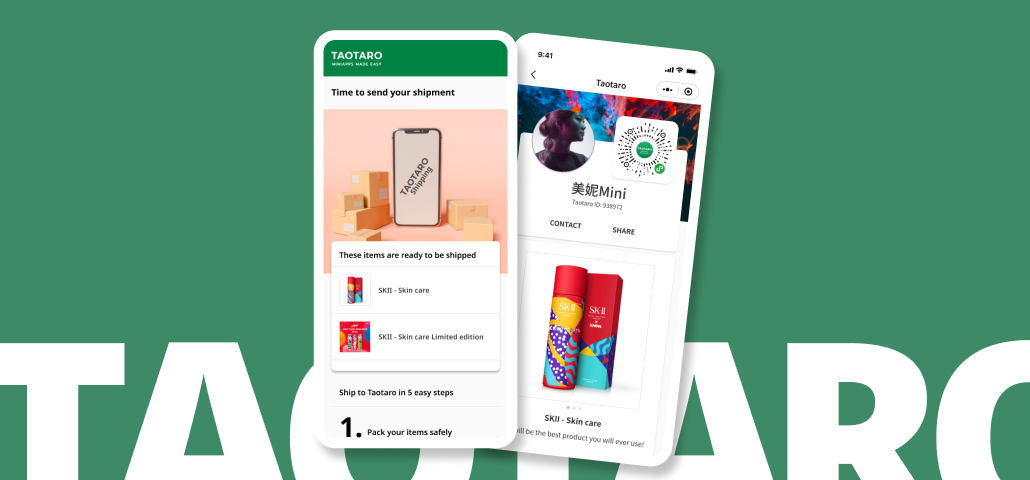Signed, sealed and delivered.
Taotaro - Shipping to China made easy

The Challenge
Selling items abroad can be a long and complicated process - especially in Mainland China where certain ingredients and products are banned from being sold. The client, TaoTaro team based in Hong Kong, had in mind a vision of how to make it easier for foreign companies to enter the Chinese online market. The plan was to create a system where sellers from countries like Japan, Hong Kong and India could:
• Set and maintain their own online store
• Receive information about the current regulations and taxes
• Ship products to China without worrying too much about the practical burdens
• Lastly, market the products on social media platforms such as WeChat
Eevy design studio was tasked with giving client’s ideas concrete forms. Our design project covered everything starting from details like the logo, all the way to developing a graphic profile, carefully planning the user experience and finally, presenting a fully functioning and beautiful desktop and mobile website. Our team also developed the code behind the website.
Goals
The main objective was to within the client’s time frame deliver user interface solutions for each step of the user’s journey. In order to consider all of the different aspects of the project, we decided to set some internal goals that lead the whole design process. These goals included:
• To facilitate a rich user experience through User Centered Design
• Intuitive and up to date UI design
• To implement the client’s vision: Creating a bridge between China and the rest of the world
• To keep in mind how the chinese culture influences user behaviour, design and common tech solutions
Understanding the Client
The project would become a failure if the client’s objectives and aspirations were ignored. This is why maintaining an open communication with the client was one of our biggest priorities. Making sure we all were on the same page enabled our team to increase efficiency, that is to say, to design exactly what’s needed without wasting extra time on second guessing. The feedback was especially important during the concept phase. This is when we had to be certain that our concept models of the system were in 100% sync with the ones of the client. We held regular online meetings where we discussed design decisions as well as the project’s progress. This resulted in numerous versions of both web and mobile web interactive prototypes that everyone had access to.
Research
Analysing competitors and Chinese market
Aiming to adapt to the Chinese market, we compared the already popular e-commerce solutions (e.g. Shopify) and outlined the factors that most likely made them thrive. This way we knew what key features we had to pay more attention to when creating the TaoTaro platform.
It was also important to keep in mind that the design of the Chinese online stores differ from the western style. Typically, mini stores like those on WeChat-app are characterised by a relatively large amount of pictures accompanied with dense text which makes it possible to distribute more information into limited areas. To match existing standards, we made sure that the online shop themes could be easily customized with photos as well as text.
Data driven design - From web to mobile
Looking at the statistics of the beta version of the website that was launched, it became quickly obvious that most of the users accessed the site through a smartphone. This made us instantly shift the main design and development focus from web to mobile web.
Design process
The design process was undoubtedly an iterative one. We started out by setting up a graphic profile that would later become the base for the first prototypes.
The prototypes were then presented to the client and updated accordingly to the feedback we had received. User tests and heuristic evaluation were the other two steps of the iteration that played an important role in the development of the prototypes. Each round of the design cycle brought us closer to the finished product.
In Conclusion
Here is our UI and UX solutions for web and mobile web:
